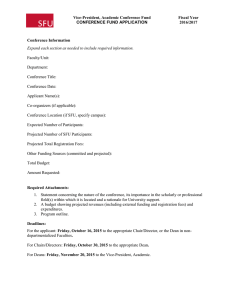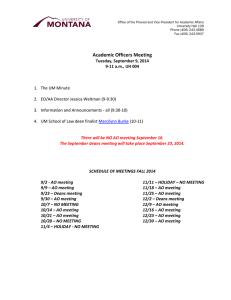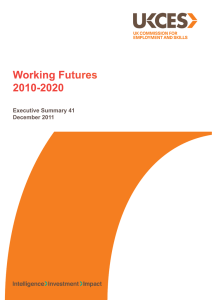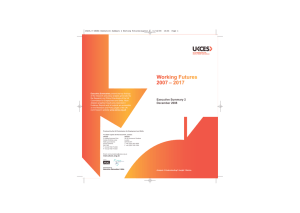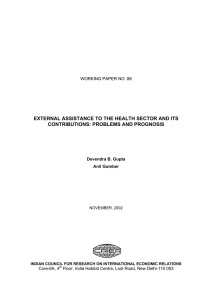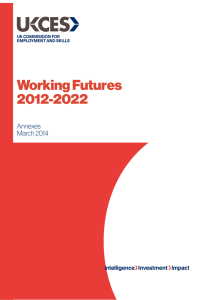Additional questions from council – February 26, 2015 How is research funding reflected in the budget? (response to include information on indirect costs
advertisement
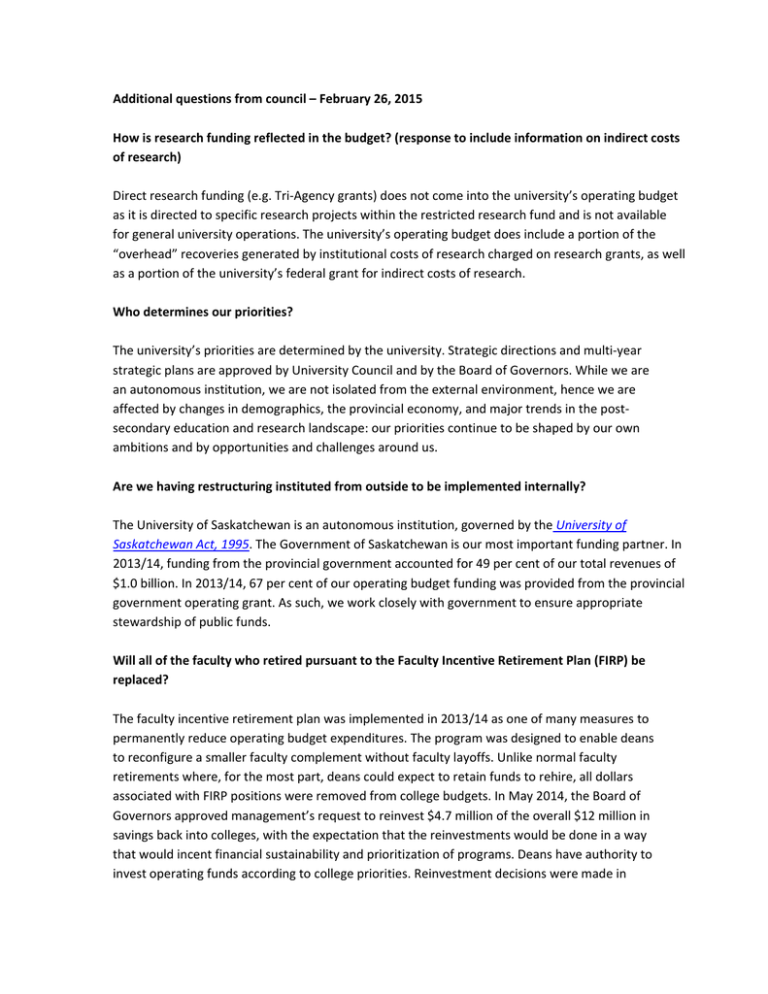
Additional questions from council – February 26, 2015 How is research funding reflected in the budget? (response to include information on indirect costs of research) Direct research funding (e.g. Tri‐Agency grants) does not come into the university’s operating budget as it is directed to specific research projects within the restricted research fund and is not available for general university operations. The university’s operating budget does include a portion of the “overhead” recoveries generated by institutional costs of research charged on research grants, as well as a portion of the university’s federal grant for indirect costs of research. Who determines our priorities? The university’s priorities are determined by the university. Strategic directions and multi‐year strategic plans are approved by University Council and by the Board of Governors. While we are an autonomous institution, we are not isolated from the external environment, hence we are affected by changes in demographics, the provincial economy, and major trends in the post‐ secondary education and research landscape: our priorities continue to be shaped by our own ambitions and by opportunities and challenges around us. Are we having restructuring instituted from outside to be implemented internally? The University of Saskatchewan is an autonomous institution, governed by the University of Saskatchewan Act, 1995. The Government of Saskatchewan is our most important funding partner. In 2013/14, funding from the provincial government accounted for 49 per cent of our total revenues of $1.0 billion. In 2013/14, 67 per cent of our operating budget funding was provided from the provincial government operating grant. As such, we work closely with government to ensure appropriate stewardship of public funds. Will all of the faculty who retired pursuant to the Faculty Incentive Retirement Plan (FIRP) be replaced? The faculty incentive retirement plan was implemented in 2013/14 as one of many measures to permanently reduce operating budget expenditures. The program was designed to enable deans to reconfigure a smaller faculty complement without faculty layoffs. Unlike normal faculty retirements where, for the most part, deans could expect to retain funds to rehire, all dollars associated with FIRP positions were removed from college budgets. In May 2014, the Board of Governors approved management’s request to reinvest $4.7 million of the overall $12 million in savings back into colleges, with the expectation that the reinvestments would be done in a way that would incent financial sustainability and prioritization of programs. Deans have authority to invest operating funds according to college priorities. Reinvestment decisions were made in November and seven colleges received funds (WCVM, A&S, Education, Engineering, P&N, Kinesiology, AgBio). How much did past deficits, or shortfalls, factor into the decision? The university has not experienced actual deficits to date. Planning tools such as the multi‐year operating budget framework, which projected a shortfall if we did not take actions to slow our expenses from growing faster than our revenue sources, helped us take the necessary steps to avoid projected deficits from actually being realized. In the future will we receive detailed budget books? In the 1990’s and the early 2000’s, bound detailed budget books were distributed in paper format. In 2005/06, with the advent of the UniFi financial system, information on budgeted and actual financial results became available online. While there are no plans to return to detailed paper books, we will continue our efforts to make financial information more understandable and readily available to our stakeholders. Through the planning and priorities committee of council, regular updates on university finances are provided and input into university budgets and plans is received. Is there a plan in place to improve endowment funds? We have a dedicated team of fundraising professionals working with donors across the world. Our donors want to see their philanthropic giving have an impact in society, and therefore give through the university to see that impact. Currently, the U of S raises approximately $30 million annually, of which approximately 25 per cent to 30 per cent is directed to endowed funds. Of those donors who choose to make a gift to an endowment, almost all are interested in restricted endowments, such as creating endowed scholarships or endowed chairs. A small percentage of donations are given to unrestricted endowments to be used for the university’s greatest priorities, and they tend to be gifts through bequests from wills. Can you assure us that there was no correlation between the resignation of the provost and firing of the president and the reduction in the budget crisis? In 2012, we announced that by 2015‐16 we would be facing a projected deficit of $44.5 million, if no actions were taken. Several actions were taken between 2012 and the departure of the provost and president in May 2014, totaling $32 million in permanent adjustments. Given the progress that was made and changes in leadership, university leaders took the summer to determine next steps. Based on the work they undertook, the operating budget adjustments project was halted and the eight priorities for action were developed and announced in September 2014. Although we still have work to do with expenses projected to continue to increase faster than revenues, there is no longer a solvency threat in the near term. With prudent financial management, we expect to be able to balance our budget in the short term and will continue to look at ways to increase and diversify revenue, as well as maximize efficiencies where possible. Were there any other alternatives that could have been taken other than laying off employees? Was this an ethical approach? Laying off employees is always an incredibly difficult decision. A multitude of alternatives were considered, including attrition and assisted early retirement programs, but in order to accomplish timely, fundamental organizational structure change – such as implementing the zone model in FMD – it was determined layoffs were one course of action the university would take. We learned from this approach and the negative consequences of these actions. In the future, other alternatives will be considered, but layoffs will always be an option if this is seen as the best way to steward resources and affect important changes to university services. There is much expansion in the College of Nursing. What is the cost of acquisition of robots, joint ventures, etc., and what is the cost of replacement in the future? How do we deal with such expansion and is it sustainable in the future? The question that was raised concerning the remote presence program in the College of Nursing was shared with the dean of the college.
